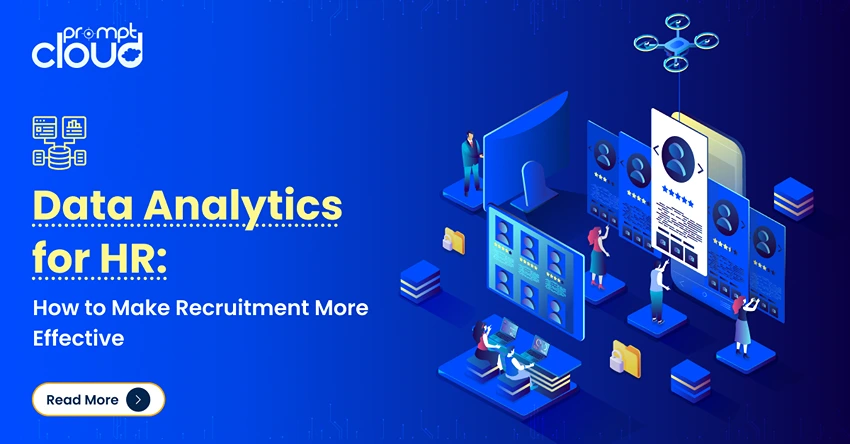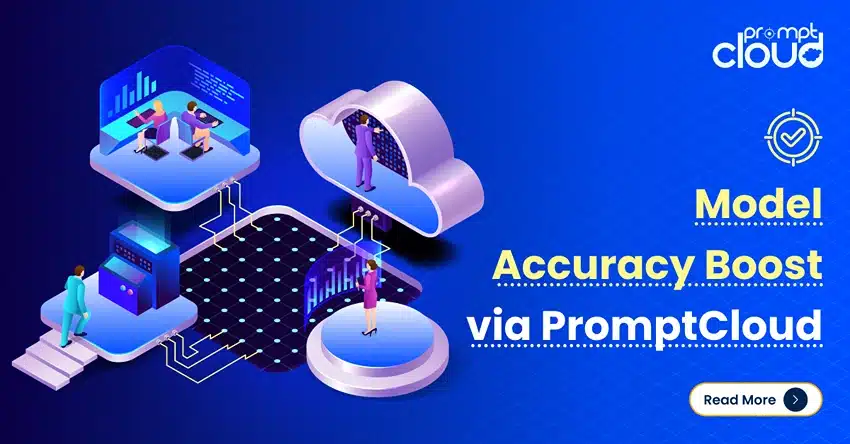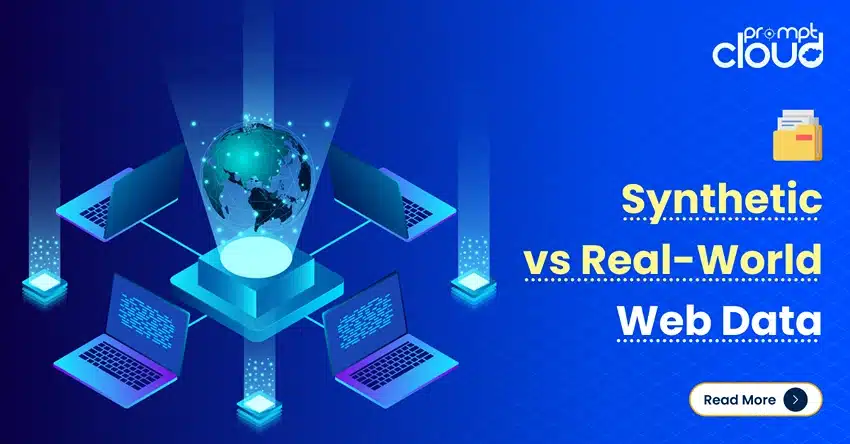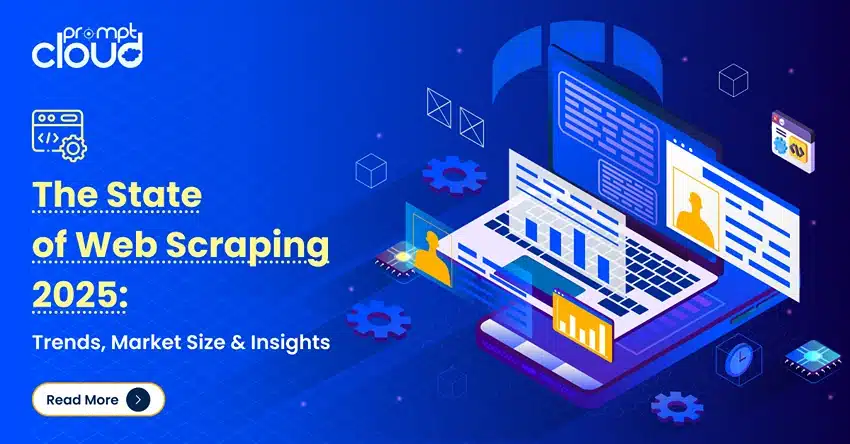
**TL;DR**
Data analytics for HR turns a stream of recruitment process into practical guidance. The growing use of data analytics for HR helps hiring teams convert routine processes into measurable outcomes. Teams combine statistical models, market data from job scraping, and workforce analytics to shorten time to hire, improve quality of hire, and raise diversity outcomes. It is not about replacing people with software. It is about hiring managers to make sound data-driven decisions.
The Case for Data Analytics in HR
Hiring has always blended art and science. Managers observe, listen, and decide. Yet memory and first impressions can mislead. Busy teams also drown in volume. A single posting might attract hundreds of applications that look strong on paper but do not match the reality of the role.
Traditional signals are not useless. They are simply narrow. A résumé shows what someone has done, not what they will do next. An interview favors confident talkers more than steady contributors. Referrals often reproduce the network that exists rather than expanding it.
Data helps in three ways. It widens the lens by adding more signals. It tests what actually predicts success inside your company. It scales, which means it learns from thousands of outcomes, not a handful of stories. This is where data analytics for HR bridges intuition and evidence.
Turning intuition into evidence
A modern data analytics for HR practice correlates many attributes with later performance. Think of skills, tenure patterns, project history, writing samples, public code, portfolio work, and even response speed. A recruiter can see which channels produce long staying employees, which job descriptions attract the wrong audience, and which skills move the needle in a given team.
Imagine shortlists that are ordered by predicted success rather than keyword count. Imagine a simple flag for offer risk based on past behavior. These are practical tools, not science fiction.
The measurable upside
Teams that adopt data analytics for HR see bottlenecks before they appear. The result is less stop and start in projects and fewer expensive emergency searches. You will see examples later from companies that moved these ideas from slide decks into daily operations.
From speed to precision
Speed matters when a role is critical. Precision matters in every role. Data helps you pick people who stay, learn, and contribute. In fields with high churn or rare skills, precision is the difference between a steady team and an endless cycle of replacement. The nice part is that data scales. A seasoned recruiter might have notes on five hundred interviews. A system can learn from fifty thousand outcomes and surface patterns no one person can store.
Talk to PromptCloud.
Ready to scale your data operations without managing scraping infrastructure.<br>Talk to PromptCloud’s team through the Schedule a Demo page and get a fully managed Data-as-a-Service pipeline tailored to your business.
How Data Analytics Transforms the Recruitment Process
Recruitment used to be a stack of résumés, a week of calls, and a calendar full of interviews. Recruitment is now a continuous loop powered by data analytics for HR, not a stack of résumés. Today it looks like a data flow that you can observe, test, and improve.
1. Sourcing with intent
Before a posting goes live, analytics can answer three basic questions. Where should we post? When should we post? What should we say? With job scraping and market feeds, HR sees which roles are heating up, how competitors frame similar listings, and which salary bands draw real interest.
Job board performance snapshot using scraped data
| Platform | Average applications per role | Average hire quality score from one to ten | Average time to hire in days | Cost per hire in dollars |
| 230 | 8.1 | 24 | 420 | |
| Indeed | 340 | 7.4 | 18 | 320 |
| Glassdoor | 150 | 8.5 | 21 | 290 |
| Local boards | 90 | 6.7 | 29 | 180 |
A snapshot like this helps HR leaders apply data analytics for HR when planning job board budgets. Reading this kind of table beside your own outcomes tells you where to put the budget and where to hold back. It replaces volume for volume’s sake with a focus on quality.
2. Screening with prediction rather than keywords
Screening tends to slow everything down. Predictive models help by reading more than buzzwords. They look at skill density, project outcomes, career progression, and cultural signals drawn from public work. The goal is not perfection. The goal is a shortlist that is more likely to contain finalists.
A simple scoring frame for candidates
| Metric | What it captures | Weight | Typical source |
| Skill match | Overlap between required and proven skills | 40 percent | Résumé, profile |
| Relevant experience | Fit with domain and role depth | 25 percent | Résumé, company history |
| Culture fit signal | Trajectory and values fit | 20 percent | Public profiles, survey |
| Engagement probability | Likelihood to accept and stay | 15 percent | Offer data, sentiment |
The point is not to hide behind a score. The point is to reduce noise so recruiters spend time where it matters. This model-driven process is the foundation of data analytics for HR screening systems.
3. Better interviews through evidence
Every company has interview habits that feel right but do not predict success. You can study past interviews, the questions asked, the ratings given, and the later performance of those hires. Over time, the rubric improves. Some questions go away. Others become standard. Interviewers receive the same guidance so candidates receive a fairer experience.
4. Reducing bias and improving equity
Bias can slip in through language and process. Text analysis highlights gender coded words or unnecessary hurdles in postings. Pipeline dashboards show who applies, who reaches the shortlist, and who receives offers. That view helps teams diagnose where the process filters people out for reasons that do not relate to ability. Such text analysis tools are now common in enterprise data analytics for HR platforms.
5. Forecasting demand
Data analytics for HR brings workforce forecasting closer to business planning. Recruitment does not end with a hire. It loops back into planning. Workforce analytics blends hiring data with sales, product roadmaps, and turnover patterns to predict where roles will open and when. A retailer preparing for a holiday peak can see which regions need extra staff and start early. A software company can line up training for skills that will be needed next quarter.
6. A loop that never stops
In a mature setup, analytics is not a quarterly report. It is a loop. Results from each hiring cycle feed back into sourcing and screening. Over time the system learns what works for your context and your teams.
What changes when you run on data
| Recruitment metric | Traditional approach | With analytics |
| Time to hire | Estimated by memory | Calculated from ATS logs and trended |
| Quality of hire | Manager opinion at year one | Linked to retention and performance |
| Source attribution | Self reported by recruiters | Mapped across channels automatically |
| Diversity ratio | Measured once a year | Monitored continuously |
| Forecast accuracy | Reactive to attrition | Predictive with business indicators |
When hiring becomes measurable, it becomes improvable. The team moves from we think this person fits to we know how to find people who fit.

Figure 1 – A closed feedback cycle showing how recruitment analytics turns raw HR data into measurable hiring improvements.
Real World Examples of HR Data Analytics in Action
These short stories are not theory. They show what happens when HR teams put analytics to work. Each example shows data analytics for HR at work in real business conditions.
1. Xerox reduces turnover in contact centers
This early success became one of Xerox’s key data analytics for HR case studies. Xerox gathered data on performance, engagement, schedules, and tenure. With that view, HR could spot traits that tended to predict early exits. Commute length mattered. Shift preference mattered. Once those predictors became part of screening, attrition in the function fell by more than twenty percent. The lesson is simple. Focus on quality of match, not only quantity of applicants.
2. Unilever scales fair screening
A global intake created pressure on recruiters. Using data analytics for HR, the team compressed hiring cycles and adopted digital assessments guided by data. Résumé review time fell. Hiring cycles compressed from months to weeks. Diversity metrics improved because scoring became consistent from one market to the next. The broader point holds for any large organization. Consistency backed by evidence is fairer and faster.
3. Google retires what does not work
People Analytics at Google tested interview ideas against actual outcomes. Brain teasers felt clever. They did not predict success. Those questions went away. Interviewer reliability became a tracked metric. The message for everyone is to test assumptions inside your own walls and keep what proves out. It’s a reminder that data analytics for HR evolves by testing and iteration.
4. Proactive hiring with market signals
Large services firms watch public postings to anticipate demand. When a competitor opens many roles for cloud engineers in a specific city, it signals a project ramp. HR pairs those signals with internal plans to build candidate pools in advance. For teams that want an overview of the methods used to analyze unstructured job data at scale, see the guide on data mining techniques.
5. Location aware staffing in real estate and retail
Market activity by region can inform headcount plans. When new projects rise in a given area, field roles follow. This is where location level analytics described in benefits of real estate data analytics using big data connects directly to HR. Blend workforce data with local market signals and hiring becomes a lever, not a last minute scramble.
6. Finance links hiring to return
Banks and fintech firms compare hiring cost with later performance. They calculate the yield of each channel, not only the spend. This mirrors the datafication principles used in finance where every action is measured. Applied to HR, each hire can be connected to output and retention rather than a generic headcount number.
7. Reading public content to understand candidates
Signals do not live only inside HR tools. Public content tells you how candidates think and what they value. Teams use automated crawlers to read career blogs and forums at scale and then apply sentiment analysis. This approach, outlined in extract WordPress blog data with an automated WordPress scraper, helps recruiters understand the conversation around benefits, flexibility, and culture, long before an application arrives.
Key takeaway
Once HR runs on evidence, recruitment stops being reactive. Analytics does not replace the recruiter. It strengthens judgment with facts, probabilities, and timely signals.
Building a Data Driven Recruitment Framework
Step one, decide what to measure
Building a data-driven recruitment framework starts with data analytics for HR foundations. Your goal guides your data plan.
Example metrics map
| Objective | Metric | Source | Time frame | What you learn |
| Reduce churn | New hire retention rate | HR system and exit notes | Quarterly | Roles or teams with early exits |
| Improve efficiency | Time to hire | ATS and recruiter workload | Monthly | Where the pipeline slows |
| Raise equity | Applicant mix by demographics | Candidate database | Ongoing | How inclusive sourcing is |
| Improve quality | Performance after six months | Review data | Semiannual | Accuracy of screening |
| Plan ahead | Role demand index | Job scraping and business data | Ongoing | Skills rising in demand |
Once goals are clear, you can link analytics to business results, not only HR metrics.
Step two, build a dependable data pipeline
| Data type | Example sources | What it includes |
| Internal HR data | HR system, payroll, ATS | Tenure, stage movement, promotion history |
| External data | Job boards, professional networks, salary surveys, scraped listings | Market demand, pay ranges, regional supply |
| Behavioral data | Candidate engagement, offer response, social sentiment | Interest level and fit signals |
Your pipelines are the heartbeat of data analytics for HR. This is where web data integration comes in. External hiring signals such as postings, salaries, and trending skills can flow into your warehouse on a schedule. The payoff is a picture that reflects both what is happening inside your company and what is happening outside.
Step three, apply analytics across the funnel
Data should guide every stage, from first contact to the first review.
| Stage | Example use of analytics | Outcome |
| Sourcing | Identify channels that deliver long term performers | Better spend and stronger pools |
| Screening | Score résumés by predictive fit | Shortlists that reflect role reality |
| Interviewing | Track question effectiveness and interviewer bias | Consistent and fair evaluation |
| Offer and conversion | Model acceptance probability | Fewer declines and quicker closure |
| Post hire | Link performance to source and screen | Learning that improves the next search |
Step four, visualize and share
Insights matter only when people can see them. Use dashboards and simple stories rather than raw tables. Leaders should be able to see an attrition heat map, a funnel chart, and a link between source and performance without opening a spreadsheet.
Step five, create feedback loops
Treat analytics as a daily habit. If quality dips, refine your sourcing. If offers face more declines, adjust compensation and timing. If churn rises, revisit onboarding and team fit. Each cycle makes the system sharper.
Step six, balance automation with judgment
Let automation do the heavy lifting on pattern recognition. Keep people in charge of empathy, negotiation, and culture fit. Automation handles scale; data analytics for HR ensures precision.
Step seven, grow with governance
More data brings more responsibility. Keep privacy and compliance at the center. Use consent tracking, access controls, anonymization where appropriate, and clear audit logs. Governance protects the people whose data you rely on and it protects the company as well.
The Future of HR Analytics, Predictive, Ethical, and AI Augmented
Predictive hiring is where data analytics for HR meets machine learning.
Predictive becomes normal
Instead of waiting for a quarter to end, models will forecast where bottlenecks will appear, which candidates are likely to decline, and which employees might leave soon. These views use a mix of internal outcomes and external signals from job scraping and market activity. Planning improves because teams act before problems arrive.
AI that understands context
New tools read job descriptions, parse résumés, and scan public work. The next leap is understanding capability, not just keywords. Systems will look at project outcomes, collaboration notes, and writing or code quality to infer soft skills such as teamwork and adaptability. The aim is a fairer and more complete view of fit.
Trust built on ethics and clarity
If algorithms influence who gets hired, teams need to show that the process is fair. Expect bias checks by demographic and location, clear score explanations, and routine model retraining on balanced datasets. Candidates will ask how decisions are made. The ability to answer that question builds trust.
One view across the employee journey
Recruitment data meets performance data, learning data, and engagement data. With that union, HR leaders can answer high value questions. Which sources produce people who grow into leaders. Which skills inside the company are rising or fading. Which training investments reduce churn. Information moves in a loop where each decision improves the next.
Always human at the core
Analytics frees time for what only people can do. Recruiters connect, listen, and judge context. Data does not erase empathy. It gives empathy room to breathe by removing tedious work and surfacing clear facts.

Figure 2 – A visual model showing how AI supports recruitment analytics from data ingestion to human validation.
Data Analytics as the New Compass for HR
Data analytics for HR transforms hiring from chance into system. Great hiring feels calm and precise. It is not luck. It is a system. Data analytics for HR turns recruitment from a series of one off choices into a continuous practice. When you blend internal results with external market intelligence and you keep a feedback loop alive, you move from guessing who fits to knowing why someone fits.
The cultural effect matters too. Teams that treat hiring data as a strategic asset build stronger and more diverse groups. They shape capability rather than chase it. The next decade will belong to HR functions that learn faster than they hire, that use analytics to augment human potential, not to replace it.
Ready to upgrade your data analytics for HR workflows?
Ready to scale your data operations without managing scraping infrastructure.<br>Talk to PromptCloud’s team through the Schedule a Demo page and get a fully managed Data-as-a-Service pipeline tailored to your business.
FAQs
1) What is data analytics for HR in practical terms?
It is the habit of turning every hiring touchpoint into a measurable signal and using those signals to guide decisions. Think of it as an operating system for recruitment. It blends tracking, simple statistics, and machine learning to show what actually drives quality hires in your context.
2) How does AI change recruitment analytics?
AI reads patterns humans do not notice at scale. It can score résumés for likely success, flag offer risk, and suggest interview questions that predict performance. The real value is context. Models learn from your outcomes so the shortlist reflects how your teams succeed, not a generic best practice.
3) What data should HR teams analyze beyond résumés and interviews?
Combine internal outcomes with live market signals. Pull ATS stage data, performance reviews, and retention. Add job scraping for salary bands, skill demand, and location trends. When these sources sit in one place, you can connect hiring choices to business results rather than anecdotes.
4) Can AI help reduce bias in hiring?
Yes, if you design for it. Bias audits check model outcomes by gender, ethnicity, and location. Explainable AI shows why a candidate ranked high or low in plain language. Retraining on balanced samples keeps drift in check. Human review remains the safety layer that approves or overrides the suggestion.
5) How do we keep AI fair and privacy safe in HR?
Start with consent and minimal collection. Mask sensitive fields before modeling. Limit who can view raw data. Keep an audit trail for who changed what and when. Share model summaries with stakeholders so everyone understands how the system reaches a recommendation.
6) What is the best way to measure the quality of hire with data?
Link early signals to later outcomes. Tie hire source and screening score to probation success, ramp time, team ratings, and year one retention. Review these links quarterly. When you see which signals predict staying power, you can rewrite job ads and screening rules with purpose.
7) How can AI improve sourcing without bloating the funnel?
Use models to rank channels by long term outcomes, not clicks or applications. Test copy and timing like a marketer would. Multi variant tests can rotate titles and benefits while job scraping shows competitor activity by city and role. Spend follows what produces durable performers.
8) Does AI replace interviews?
No. It prepares better interviews. Analytics highlights skill gaps to probe and suggests scenarios tied to real work. Interviewers get a common rubric so candidates face the same bar. You still make the call. AI just removes the noise so your judgment lands on firmer ground.

















